Publish model contents to PowerPoint presentations
PowerPoint integration provides easy access to Enterprise Architect’s model within PowerPoint presentations. Insert diagrams and elements from the Enterprise Architect model in PowerPoint slides with references. These diagrams and elements can be synchronized anytime to reflect the latest snapshot from the model!
Prerequisites
- MDG Integration for Microsoft Office
Key Features
- Insert Packages, Elements, and Diagrams details directly from the Enterprise Architect repository by double-clicking or drag and drop.
- Ensure the presentation stays current with the latest model from Enterprise Architect.
Functions
- Packages, Elements, and Diagram names can be inserted.
- Child Packages and Child Elements details can be inserted in a table format.
- Relationship details can be inserted in a table format.
- Diagrams can be inserted.
To publish content in PowerPoint
1. After the installation of MDG Office Integration ( Inbuilt with EA Ultimate Edition ), Open a PowerPoint presentation and you can find a new ribbon named Enterprise Architect as shown below

2. Connect to an Enterprise Architect model – Both EAP files and database models can be selected. (If the model contains security, then the Enterprise Architect login credential’s dialog will be shown)
3. After successfully connecting to the Enterprise Architect repository, Enterprise Architect’s Project Browser will be displayed in the Powerpoint as below with the connected repository objects.
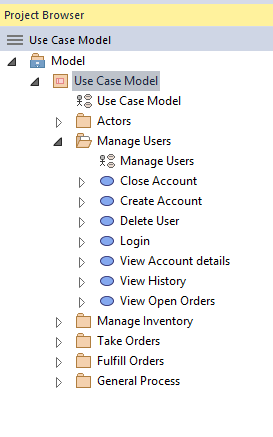
4. Objects can be easily inserted into Powerpoint by Dragging and Dropping or by Double Clicking the elements from the project browser.
- Insert options may differ based on the items.
- For Packages, it will display as below.
For example, if we double click the Manage Users package and selected Text, then the output will be like below
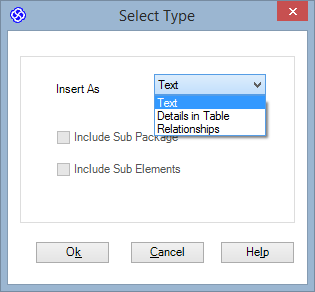

- Text – Drop the Package Name as Text
- Details In Table – Drops the details of child elements in table format
For example, if we double click the Manage Users package and select details in the table, then the output will be like below
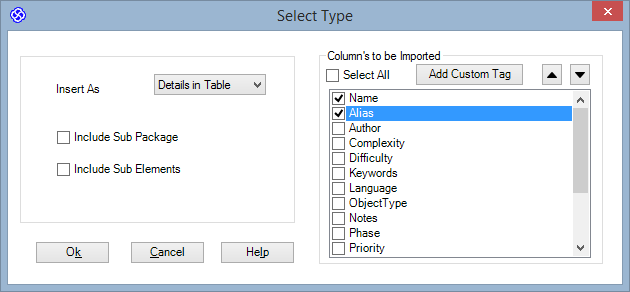
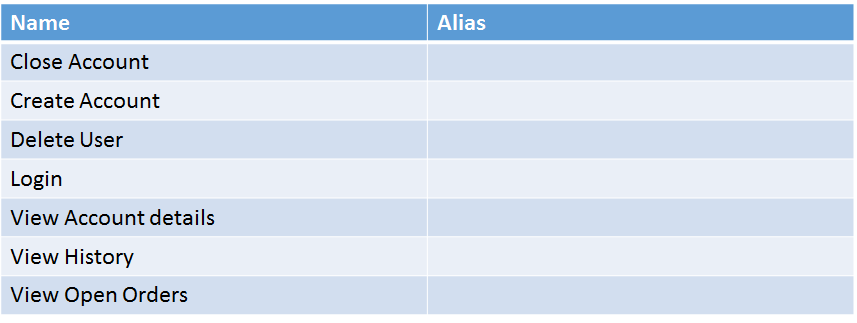
- Include Sub Package – If checked, will add all child packages recursively.
- Include Sub Elements – If checked, will add all child elements recursively.
- Relationships – Drop the links of the selected package in table format.
C. For Elements, the below wizard will be displayed.
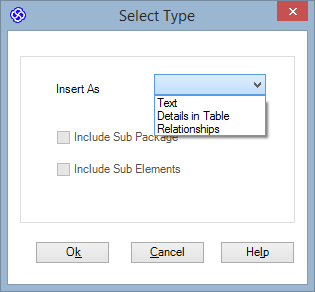
- Text – Drop the Element Name as Text
- Details In Table – Drops the details of its child elements in table format
For example, if we double click the Login from Manage Users package and select details in the table, then the output will be like the below.
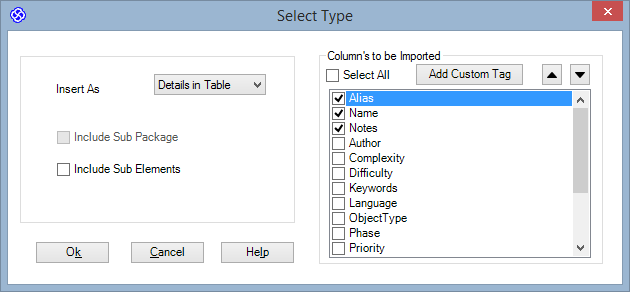
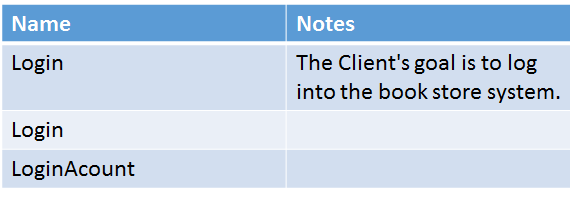
- Include Sub Package – Will be disabled ( Package won’t exist under an Element )
- Include Sub Element – If checked, will allow dumping all the child elements recursively.
- Relationships – Drop the link details of the selected element in table format
For example, if we double click the Login from the Manage Users package and select relationships, then the output will be like below
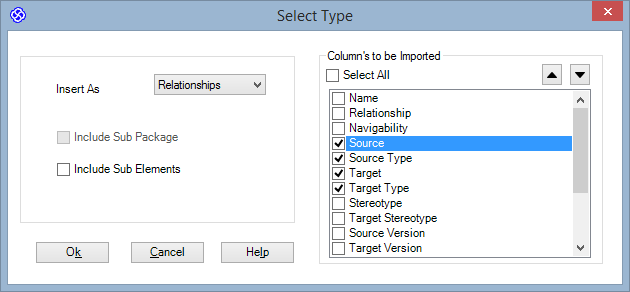

d. For Diagrams, the below wizard will be displayed

- Text – Drop the Diagram Name as Text
- Diagram Image – Add a Diagram image to the slide.
For example, if we double click the Manage Users diagram from Manage Users and select the diagram image, then the output will be like below

- Relationships – Used to drop the link details of the selected element in table format. It will list all the elements that are connected with the selected element.
Synchronization:
- All the Items which are inserted from the repository can be updated in PowerPoint using a single click (Sync with Model).
- In the Below diagram, have inserted the Package name and diagram into PowerPoint from the EAExample repository.
Sample Diagram: (Before Sync)

Sample Package Contents: (Before Sync)

- In the future, if the details in the repository have changed, those changes can be synchronized in PowerPoint by just connecting the repository.
For example, in the diagram repositioned all the objects and in the table, contents have added alias for all the objects in enterprise architect. After all the changes in EA, I just connected the model in PowerPoint and used Sync with Model option and the sync will be started (refer below diagram).

- After the items get synchronized, the PowerPoint contents will be updated with the details from the latest repository.
Sample Diagram: (After Sync)

Sample Package Contents: (After Sync)

Further Information
Please contact us or write an email to info@sparxsystems.in to have a live demo of the new EA 16 features and capabilities.



